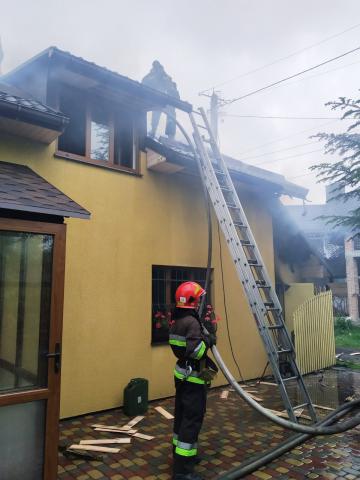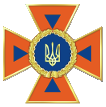History

The history of the training fire and rescue unit begins with the training fire brigade (TFB), which was created during the Kyiv officer training courses in 1948.
In May 1954, the CPTU of the Ministry of Internal Affairs was relocated to Lviv by order of the Ministry of Internal Affairs of the USSR and was renamed the Lviv Fire and Technical School of the Ministry of Internal Affairs of the USSR.
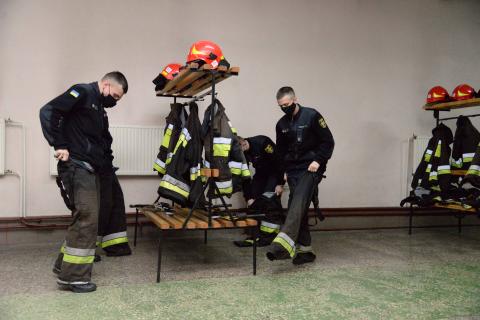
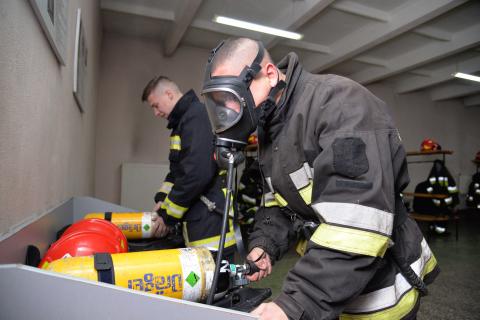
On the basis of The Fire and Rescue Training Unit practical training of chiefs of guards, commanders of branches, firefighters-rescuers, duty radio telephonists, substitute radio telephonists, paramedics, sanitary instructors, chemists-dosimeters and practical psychologists for operative-rescue service of civil defense is carried out. In addition, the operational calculations of The Fire and Rescue Training Unit are directly involved in extinguishing fires, in eliminating the consequences of accidents, natural disasters and catastrophes of natural and industrial nature. The Unit provides practical classes on fire tactics, fire and rescue equipment, fire and rescue training, training of gas and smoke detectors, prepares and conducts fire and tactical exercises.
One of the main tasks of the permanent staff is to provide cadets and students with the necessary knowledge and skills in the study, use and application of firefighting, rescue and special equipment, combat clothing, fire and rescue equipment, hose management during practical work on fires and emergency response. emergencies, which gives the opportunity to gain practical experience and overcome the psychological barrier of the furnace while working in extreme conditions.
After undergoing initial training, cadets are on duty in the training fire and rescue unit. The year 2021 was no exception. During the 2020-2021 academic year, the training fire and rescue unit made 106 operational trips, in which the cadets took a direct part in extinguishing 103 fires and eliminating the consequences of 3 road accidents. Most often, operational departments were involved in extinguishing fires in the residential sector (67 fires of houses, apartments, basements) and fires in ecosystems (34 fires in forests and drylands).
Before their "baptism of fire", the cadets underwent a special training course on the basis of the fire and rescue unit and successfully passed the tests. They got acquainted with the basic fire and rescue equipment, learned to use it in emergency response.
In October 2020, the box gates were replaced with modern panoramic sectional gates.
The operational calculation of The Fire and Rescue Training Unit includes first aid vehicles APD-2 "Dolphin", APD-4 (2705) 63B, tank trucks AC-4-60 (5309) -505M and AC-4-60 (530905) -515M based on the chassis of the MAZ car . Also in February 2016, a special chemical protection vehicle Iveco Magirus was used in the training process, which was handed over to the school by colleagues from Poland in the framework of joint international cooperation, and specialists of the fire and rescue department completed it with special equipment.
From January 2021, cadets of the University have the opportunity to acquire practical skills with the involvement of a modern special rescue vehicle light type SARM-L based on the car FORD RANGER, which was received from the State Emergency Service of Ukraine under the State Road Safety Program in Ukraine for the period up to 2020.

The car is equipped with modern special equipment, which makes it possible to release the injured and possible dead, to stabilize vehicles in difficult traffic accidents with the overturning of vehicles and more.
Manufacturers of special equipment and tools included in the car are well-known European and international organizations.
The involvement of a special light rescue vehicle SARM-L based on the FORD RANGER car will significantly improve the quality and level of preparation of future rescuers to successfully perform the tasks assigned to them in response to traffic accidents, emergencies, fires and other dangerous events.
During the operation of fire, emergency and rescue equipment and fire and rescue equipment, the personnel of the unit are constantly working to improve them.
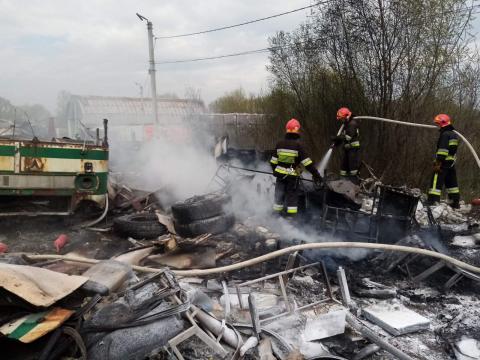

The 112 call center and the emergency response decision support system with the use of on-board computers of fire and rescue vehicles are continuing and improving. The center was established in accordance with the state program of service 112 and is designed to conduct classes, training practices of cadets and students of the University, retraining and advanced training of dispatchers of operational and dispatching service and direct participation in actions to eliminate the consequences of emergencies of various types.
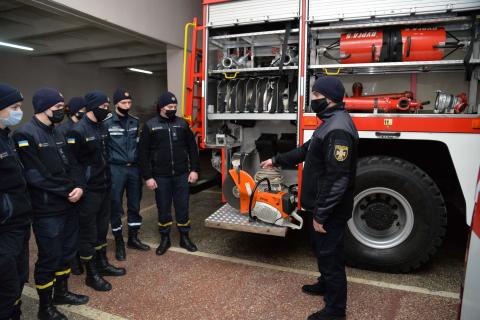
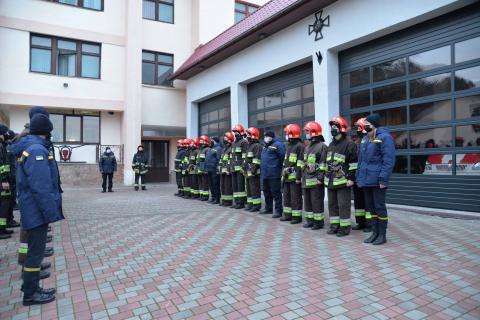
The Center has created three automated workplaces: dispatcher, paramedic and psychologist-consultant. Special software has been developed for each workplace. In particular, an electronic map is installed at the dispatcher's workplace, which shows the movement of fire and rescue units, the condition of special vehicles (calculated, at the place of call, in reserve), and the dispatcher can receive real-time images from the scene. In addition, a number of electronic directories have been installed. The Handbook of Hazardous Substances contains a description of more than 800 explosive, flammable and toxic substances, data on the peculiarities of working with them and methods of neutralization, a description of first aid and personal protective equipment in case of injury. Using the directories, the dispatcher can provide background information to the specialists who are directly on the scene of the emergency through the voice channel of communication with the cab of the car. A program has been developed for the paramedic's workplace, which contains a description of pre-medical care for various injuries and injuries that may occur in an emergency. Using this program, a paramedic can provide counseling to emergency responders, eyewitnesses, or rescuers on how to properly provide first aid to victims before doctors arrive. A similar help system has been developed for a counseling psychologist, who can provide assistance to whistleblowers, eyewitnesses or rescuers at the stage of accepting a call, if there are victims in the psychological aspect (in a state of stress, panic, etc.).
Fire and rescue vehicles are equipped with stationary and portable on-board computers with special software that help make decisions when working directly during the aftermath of an emergency, ranging from an electronic map to find the optimal route and ending with various directories: "Hazardous substances", "First aid", "Psychologist consultant", etc. The cars are equipped with cameras that allow you to transmit images from the scene of the emergency and have access to the Internet to search for additional information.
The personnel of the training fire and rescue unit installed and introduced into the training process a new training place to prevent possible injuries and other accidents that may occur during the operational work of units of the State Service of Ukraine for Emergencies to de-energize facilities by cutting electrical wires up to 220 IN.

